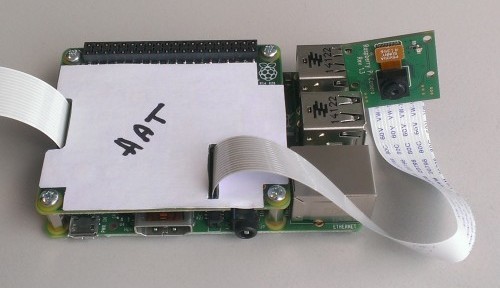HATs On for the Raspberry Pi
on

Arduino has its shields, the Beaglebone Black its capes and up until recently the Raspberry Pi just had expansion boards. The latest B+ version of the Pi comes with more I/Os increasing the pin count to 40 of which 26 are backward compatible with the original connector fitted to the A and B boards. Two of the extra pins ID_SC and ID_SD are data and clock lines to connect to a serial EPROM fitted to the expansion board, sorry HAT. The EEPROM holds the board manufacturer information, GPIO setup and a thing called a ‘device tree’ fragment – basically a description of the attached hardware that allows Linux to automatically load the appropriate driver.
Adafruit already have some prototype HATs in the pipeline which includes a servo driver board, a 2.2” TFT display and a prototyping board which is a HAT version of their Perma-Proto quarter size breadboard PCB containing its own ID EEPROM to create custom HATs. Providing the power limits are not exceeded a number of HATs can be stacked on an RPi.
This feature will simplify hardware interfacing to the RPi but the name is a bit puzzling; surely the most appropriate thing to go on top of a Pi would be a CRUST but I guess reverse engineering that acronym proved too difficult, so HAT it is, which incidentally stands for Hardware Attached on Top.


Discussion (0 comments)